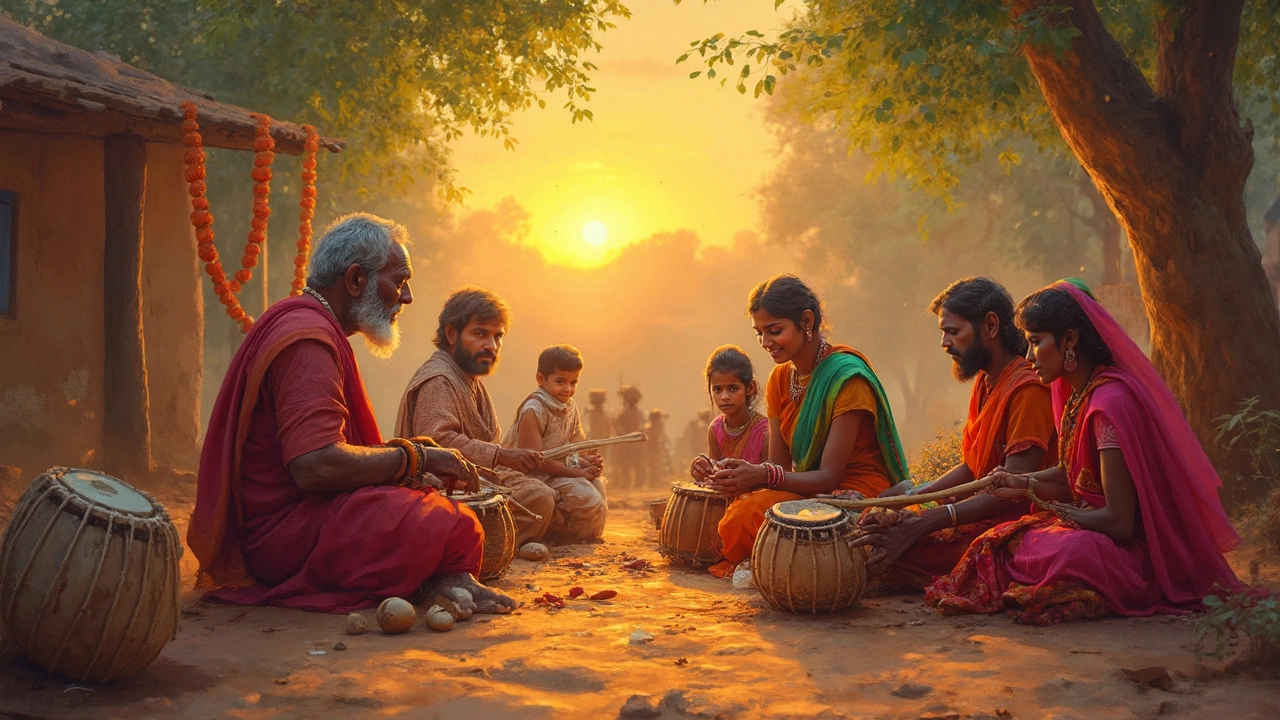
Oldest Folk Music in India: Ancient Traditions, Stories, and Sounds
Travel back to India's ancient roots. Discover the oldest folk music, its origins, stories, and timeless tunes still echoing in villages and celebrations.
Folk songs are the soundtrack of everyday life. They started as simple tunes that people sang while working, traveling, or celebrating. You can still hear that raw feeling in villages, festivals, and even on modern playlists.
Most folk songs began long before anyone recorded them. In India, they grew out of oral tradition—stories, myths, and daily chores turned into melody. A farmer might sing a tune about the monsoon, while a shepherd hummed a lullaby for the flock. These songs traveled from one person to another, changing a little each time. That’s why you find similar verses in different regions, but with local flavors.
Outside India, the pattern is the same. In Ireland, shepherds sang about the sea; in the American South, workers sang about fields and railroads. The key is that folk songs were never written for an audience in a theater. They were made for the people doing the work.
When printing and later recording became common, folk songs got a new life. A single version could be fixed on paper or tape, and people started to think of “the” song instead of many variations. For example, the Punjabi Bhangra beat, once a harvest dance, is now heard in clubs worldwide.
Modern media also added new instruments and styles. A folk melody might get a guitar or a drum set, but the core story stays the same. Artists often remix old verses to talk about current events, keeping the tradition alive. Think of how a protest song from the 1960s can be sung with a rap beat today.
Even with all the changes, the heart of folk songs remains: a simple, memorable tune that tells a real story. Whether it’s a love ballad from Rajasthan or a work song from Mississippi, the purpose is the same—share feelings and keep culture moving.
If you want to explore folk songs yourself, start with recordings from your own region. Look for compilations titled “Traditional Folk Songs” on music platforms. Listen for repetitive phrases, simple chords, and lyrics about daily life. Try singing along; you’ll feel a connection to the people who sang those verses centuries ago.
Learning a few folk songs can also be a fun way to understand history. Each line often hides a clue about old customs, weather patterns, or social rules. When you hear a line about “the river rising,” you’re getting a glimpse of how important monsoons were for farming.
In short, folk songs are living history. They started as work‑time hums, survived oral transmission, and now live on in recordings and streaming playlists. By listening, you tap into a tradition that has shaped societies for thousands of years.

Travel back to India's ancient roots. Discover the oldest folk music, its origins, stories, and timeless tunes still echoing in villages and celebrations.